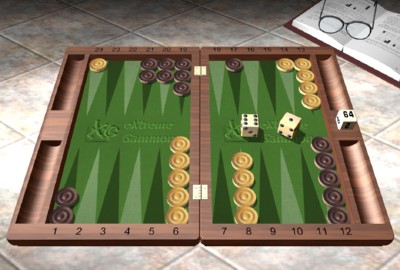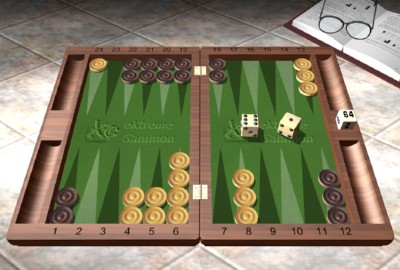Cash game. Center cube. White on move.

(A) White to play 6-1.

(B) White to play 6-1.
One of the most difficult choices in the early and middle stages of a backgammon game is the choice between creating structure (a blocking prime) and attending to issues on the other side of the board. Those issues vary: you might be able to hit a checker, or make a defensive anchor, or escape one of your back men. In some cases, making structure is correct. In other cases, playing on the other side of the board is correct. Let’s take a look at a couple of examples, to see the ideas that have to guide us in these decisions.
Let’s start with Position (A). It’s not a tough problem. White can hit a blot with 24/17* or build some structure with 13/7 8/7. The structural play has two problems: the structure isn’t that impressive, and it gives Black a direct shot at White’s blot on the 14-point. For structure to trump hitting, you want structure which is solid and imposing.
24/17* might look loose, but it accomplishes two great things: hitting an important blot, and escaping a rear checker. True, Black may hit back. He has a total of 16 return hits (all twos except 2-6, and all fives except 5-6). But that leaves 20 rolls that don’t hit, and those are great rolls for White – he’s ahead in the race and his rear checkers are out. Potentially getting all your back checkers out is a great result, and 24/17* puts White within striking distance of that goal.
Problem (B) occurs much later in the game. White has two choices: he can block in Black’s two rear checkers with 13/7 8/7, or he can escape his own last checker with 24/17. Running out is more volatile – if White gets away with it, he’s close to a double, but if Black hits, White is an immediate underdog. Making the 7-point, on the other hand, leaves White a solid but unspectacular favorite in most variations.
What’s right? White should go ahead and make his 7-point. There are two reasons:
(1) With an advantage and a centered cube, you’re not looking to make big swing plays. You’re more interested in plays that preserve your advantage and creep closer to an eventual good double. When in doubt between the merits of two plays, lean to the more conservative choice.
(2) Trapping two men will increase your gammon chances dramatically. There’s actually not much difference in raw winning chances between the two plays, but locking in Black’s two back checkers will win many more gammons.
The basic idea in these positions is a simple one: the quality of the structure you build is crucial. Turning a very weak structure into a slightly better structure, as in Position (A), isn’t worth that much. Turning a broken structure into a 5-point prime, as in Position (B), is huge, even when the alternative is escaping the last checker from behind a 5-prime! The lesson to be learned is that creating a 5-prime or even a 4-prime may outweigh making progress on the other side of the board, but just building a blocking point or a 3-prime is probably not enough.





